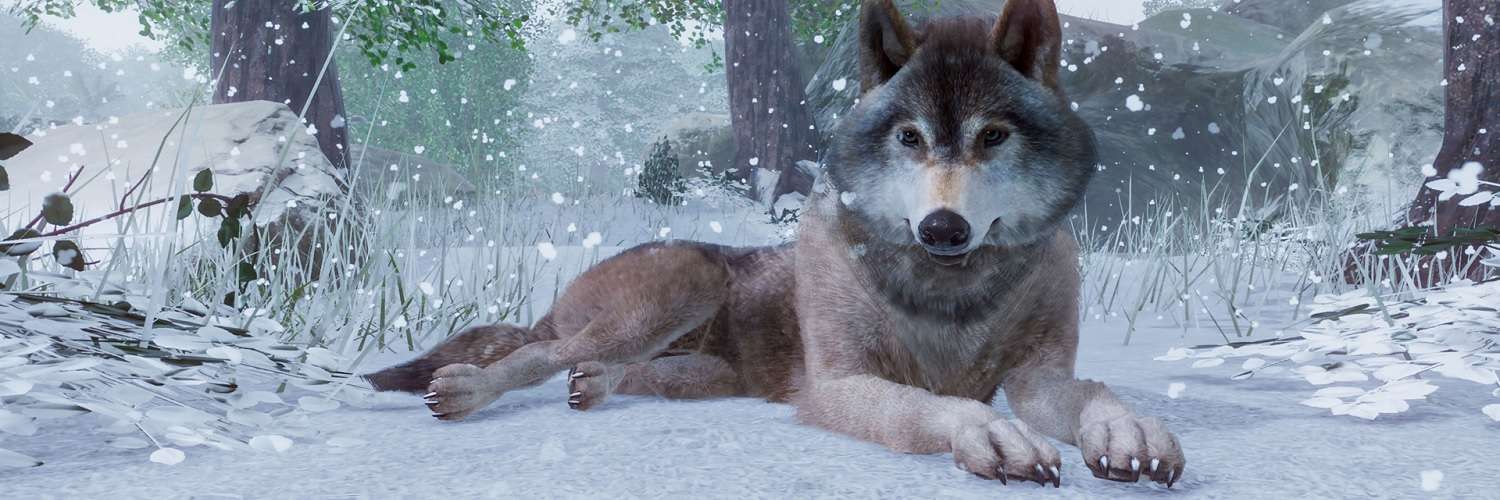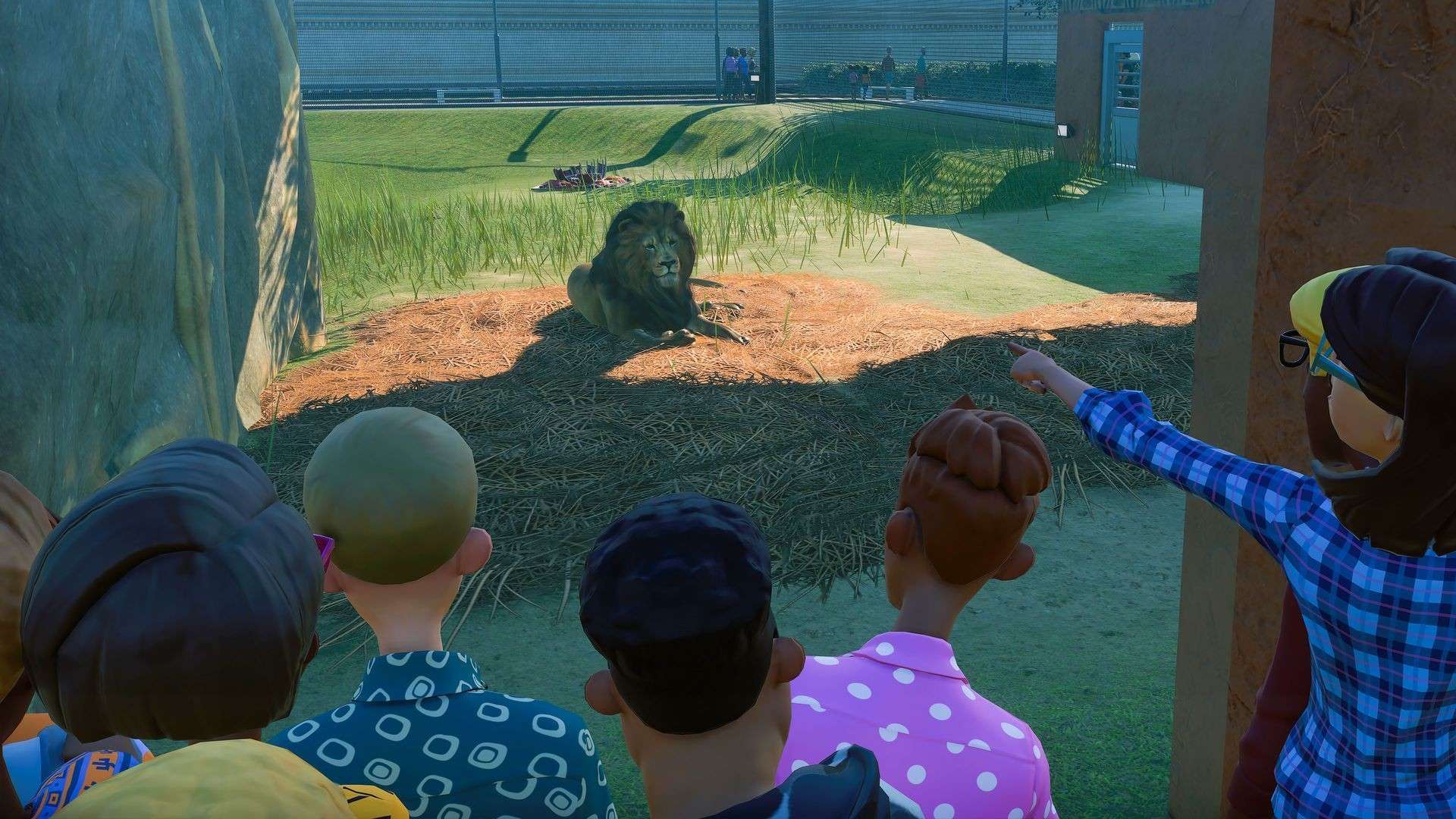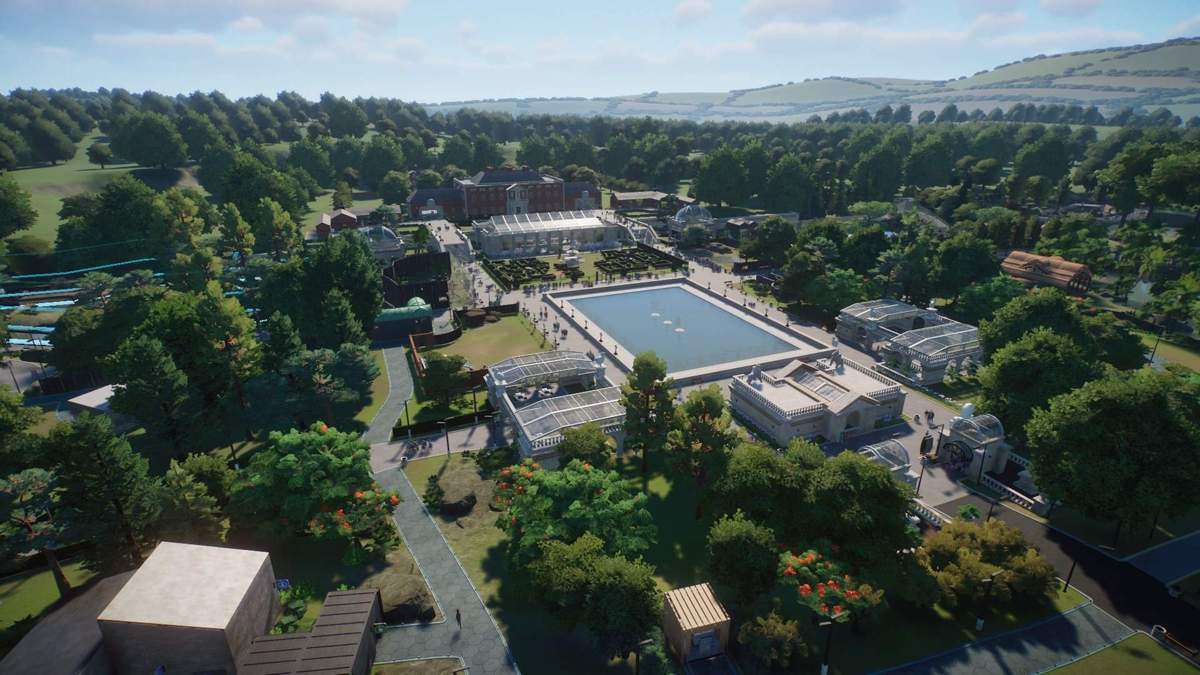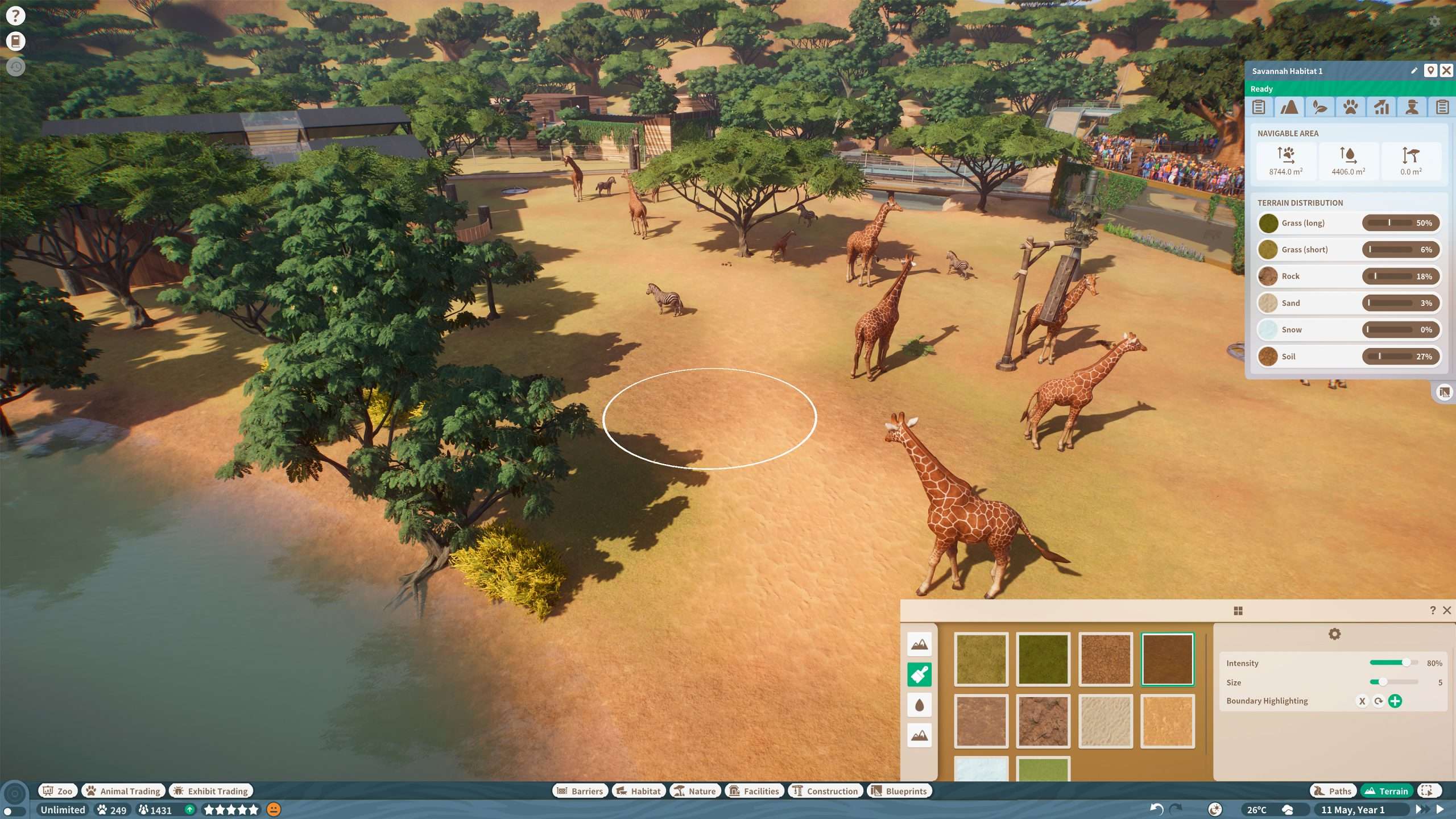
Planet Zoo PC Review
It has been six years since Frontier Developments last allowed people to create their own zoos with Zoo Tycoon on Xbox One – many developers do not seem to attempt a business simulation game set with the theme of zoos, so seeing Frontier Developments make the Planet Zoo announcement has been met with a positive reaction. This is helped by the success of the developer’s return to theme park management with Planet Coaster, a spiritual sequel to the beloved RollerCoaster Tycoon. Planet Zoo takes the creative freedom of Planet Coaster and mashes it with what was initially designed in Jurassic World Evolution to bring a wonderful zoo management simulation that does more than just have people playing to build the best zoo in the world.
There is a lot to learn in Planet Zoo, so anyone who cares for the animals and wants them to live happy lives will want to jump straight into the career mode. In here are some tutorial missions to get through before it begins to open up to more scenario-based challenges through the game’s take on a sort of story, each with a bronze, silver and gold star rating to achieve based on hitting specific criteria. It’s a pleasant introduction to the game, with fully voice characters adding some personality to what easily could become a monotonous tutorial. For people who got lost in Planet Coaster, it’s less likely that will happen here, since the campaign goes into a lot of the mechanics to get everyone up to speed to take on the more open game modes.

Things start off easy, as the game introduces basic things to keep the life of animals healthy and their mood happy, such as making sure habitats meet the animal’s country of origin’s environment. This could be simple things like cutting the grass down, making the habitat colder, throwing in a few trees to match the biomes or giving them something fun to play with from a selection of enrichment toys. If the habitat doesn’t meet the requirements, which can be seen on the profile of the animal by clicking on it and checking out its statistics, then animals become sad and their welfare decreases, which could lead to problems, illnesses and even death. It’s critical that perimeters are secure to stop animals escaping and scaring off the visitors, but also to make sure they don’t harm themselves in the process. Perimeters also must be large enough to give the animals the freedom to move around otherwise they will be sad.
As you can probably guess from the last paragraph, Planet Zoo isn’t just about making a big, successful zoo, but one that must have animals in great and happy conditions otherwise not only will the visitors not want to visit, but protesters will come in gangs and stand outside habitats with signs to protest your awful treatment of animals, while the zoo ratings will be hurt badly by animal inspection officers who find problems in your management. All this needs to be taken in to account while still managing other aspects of the zoo, such as power, water cleansing, staff and cost management.

As the campaign continues on and comes to a close, after around 14 or so hours and many mechanics explained, it is clear that Planet Zoo is packed with complexity and depth that thankfully the campaign mostly gets the player prepared for. There is a lot of individual management aspects, all which are shown through the campaign missions, but I am sure some people will jump between the campaign and other modes, since there is a lot of prebuilt zoos in the campaign and is more constrained to being an advanced learning tool than letting the player go wild with their imaginations, which is when Planet Zoo really truly shines. The campaign is asking for a lot of time to feed all of its helpful tips, but its worthwhile before jumping into the freedom of Planet Zoo‘s other modes, since by then, most people should understand what is required to have some sort of successful zoo after been put through various campaign challenges.
Before going into the other modes, I cannot really talk about a zoo management game without talking about its main attractions, the animals. On launch, the game includes over 70 animals, covering things like the African Elephant, Bengal Tiger, Brazilian Wandering Spider, Giant Panda, Golden Poison Frog, Snow Leopard and the Western Lowland Gorilla. There is enough variety with the selection of animals, so it means zoos are not just about lions, tigers and bears, but can be packed with other smaller and just as fascinating creatures. There is a Deluxe version that locks out the Komodo Dragon, Pygmy Hippo and Thomson’s Gazelle, so if those happen to be some of your favourite animals, then prepare to be paying a little extra for the privileged to bring those to the zoo.

One thing that stood out for me is the amount of work gone into each of the species, and I think the developers know this because each animal can be double clicked to zoom up to them with the camera that follows them around the habitat and truly shows off the visual splendour and detail. Each animal behave and animate well, looking just as you would expect a digital version of these creatures to be, from the soft furry textures that waves when the wind blows, which looks nice without the need for exclusive graphic card features to render it, to hard skin becoming wet when a hippopotamus cleans itself of mud when it decides to go for a swim. As with most video games, there are some hiccups with animations when it comes to interactions causing movement to look wrong, but most of the time, I found myself getting lost in watching these incredible animals going about their somewhat realistically modelled business, yes, even when they decide to drop a ton of dung in their habitat and a keeper needs to come in and vacuum the poop away. One thing Planet Zoo cannot be faulted on is its animals, so much time has been spent in making sure they steal the show, a perfect development target when the game is based on managing a zoo, plus, it gave me more of a reason to keep their welfare in check.
Many elements make up the animals’ statistics, but thankfully Frontier Developments isn’t expecting every player to be a zoologist, so to help get more insight into the animals featured in Planet Zoo a mini animal Wikipedia of sorts, called Zoopedia, contains facts and information key to gaining the knowledge on what the animals like and require. Zoopedia is incredibly handy when it comes to mixing species together in the same habitat. One does not want to mix a pack of lions with zebras in the same surroundings otherwise it is going to be a bloodbath – well not blood, since that is absent from the game, but animals can attack each other and kill. The Zoopedia packed alongside seeing individual animal’s profiles when highlighted was my saving grace – it is the one stop place to make sure things are good, but also to see the sex, age and other genetic information.

All this is important because Planet Zoo has a conservation aspect to manage as well. There are options to release animals back into the wild, with rewards for the more endangered species offering more conservation credits, which along with cash, can be used in the animal market to purchase additional animals for the zoo. This market is random, so the option to suddenly gain any animal at anytime isn’t there, more so if after the opposite sex for some breeding activities – promoted as part of the conservation feature to breed stronger and more disease resistant animals to drop back into their natural home.
Normal money is important, since at the end of it all, while there is a message of love and survival for the animals, this is a zoo and a zoo is a business that needs to make profit to be able to invest for the future and the star attractions. Everything cost money, from building walls or glass barriers around enclosures, hiring staff keepers to look after sections of the zoo by mapping their work routes to cover habitats, laying down the best pathways to access all areas of the zoo, infrastructure power coverage, gift shops or employing veterinarians to research animals and diseases, it all comes out of the pocket, but they are ways to gain more from visitors – food stalls, gift shops, and the vital one, donation boxes outside each enclosure, which mapped with information displays and speakers helps gain some much needed cash. The freedom in the tool creation means everyone’s zoo can look different. We have seen the developers show the power of options in Planet Coaster, and Planet Zoo continues this trend with its flexible design tools. All this can be shared on Steam Workshop, so for people who suck at creating new buildings or playpens, then finding other people’s creations and downloading them into your game is made easy thanks to this feature.

Not everything is great as it could be. The UI can be cluttersome to navigate when things are going on and some aspects of building is frustrating at times. I often had trouble trying to place buildings under covers – this is mainly when trying to apply a theme to a zoo, I wanted to build standard buildings under covers and wooden frames, but it took multiple attempts to click on the right part, mainly after playing with the camera to get zoomed in enough. It’s fiddly when wanting to go for the minor details – paths will sometimes not join where I want them to go without making them overly huge and out of pattern, but general, most elements are easy to get stuff how you want it. Even environments are manipulated in a uncomplicated fashion by using a painting tool to cover the ground in grass, mud or snow, while vegetation is simple as pointing and planting them. Once everything is in place, the camera makes it easy to take in all the hard work and admire the view, even other players’ avatars will come jump in and visit – the game alerts this to to you through a visitors tab, although, those these are not real people, just the avatars of them, something the game gets the player to create on first start up.
Away from career, three other modes are on offer, Challenge, Franchise and Sandbox. The latter removes money and source limitations and enables maximum research and animals from the start to allow one to build a zoo from scratch and just go for it. All the gameplay mechanics are here, but the stress of having to deal with money and research is gone. Franchise mode is an online only feature that enables multiple zoos with their own money pots (although animals can be shared between the zoos), animal trading with other players and participate in weekly challenges and leaderboard tracking. This is the main mode to play once finishing up career, as it asks to begin a new with limited cash and construction options until these are eventually unlocked through research and other gameplay mechanics. People put off by the online connection, then Challenge is basically the offline version of this mode with objectives to aim to accomplish.

As a person who enjoyed some of the older simulation games from the late 90s and early 2000s, Planet Zoo is one of those games that I could only imagine playing back then. Frontier Developments has made an impressive spiritual sequel to Zoo Tycoon, one with gorgeous visuals, complexity and deep mechanics where the micromanagement can be overwhelming for inexperienced simulation players. Mistakes, creature deaths and restarts are likely to happen here to gain the most out of Planet Zoo, but like real life, no one really magically makes a fantastic zoo on their first go, and with the lessons learned from Jurassic Park Evolution, Frontier Developments has made Planet Zoo a better game than its dinosaur filled predecessor, and is by far the best zoo management/builder you can play today.
